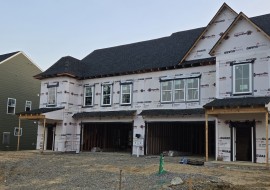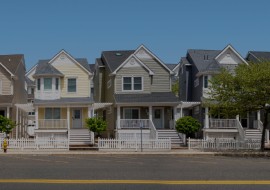Buildings account for 40% of total energy consumption in the United States. Given the scale of energy resources dedicated to heating, cooling, and maintaining these structures, there is a significant opportunity to achieve savings through policies promoting efficiency in both existing buildings and new construction. In the following sections, we describe policies that lawmakers can use to help reduce energy use in the building sector.
Building Codes
Building energy codes and standards set minimum efficiency requirements for new and renovated buildings. By establishing baseline requirements during building construction, buildings use less energy, are more comfortable, and cost less to operate over their lifetime.
Two codes set the bar for U.S. commercial and residential building energy codes: the American Society of Heating, Refrigerating and Air-Conditioning Engineers (ASHRAE) Standard 90.1 and the International Energy Conservation Code (IECC). The IECC’s focus is primarily residential one- and two-family dwellings and small multifamily buildings, and ASHRAE 90.1 sets standards for commercial and high-rise multifamily residential buildings.
State governments can adopt and amend the model energy codes set by ASHRAE and IECC. They can also dictate whether cities have the authority to adopt their own energy codes. For example, many states only allow cities to adopt stretch codes that are more stringent than the state code. The Building Codes Assistance Project, a nonprofit advocacy group, provides up-to-date information on energy adoption for all 50 states and select cities.
Benchmarking and Transparency Policies
Benchmarking and transparency policies require owners to measure, report, and share the energy consumption of their buildings. These policies allow the public, building owners, and prospective tenants and buyers to easily compare buildings by their energy performance.
Many states and cities have established energy benchmarking policies for publicly owned building and large privately owned buildings. At the national level, voluntary programs such as LEED and ENERGY STAR® Portfolio Manager in the large commercial and multifamily sector allow building owners and policymakers to better track and share energy use information.
A few leading cities have adopted energy-use disclosure policies for single-family homes. Portland, Oregon, and Minneapolis both require homeowners to receive an energy report and disclose it when listing their home for sale. In addition to these mandatory policies, efficiency advocates and government agencies across the country have worked to devise voluntary residential energy labeling programs and policies. These include the Residential Energy Services Network Home Energy Rating System, U.S. DOE Home Energy Score, and Energy Metrics to Promote Residential Energy Scorecards in States.
Building Performance Requirements
Places like New York City, Seattle, and Boulder are going beyond benchmarking and transparency policies to pass laws requiring owners of existing buildings to meet phased energy or emissions reduction requirements. Owners of buildings that do not meet the requirements must make upgrades to their buildings, such as replacing inefficient lighting, tightening the building envelope, and upgrading building systems and equipment. In addition to building systems, building performance policies may also set operation and maintenance requirements. Common building performance policies include building tune-up, retrocommissioning, comprehensive building assessment, and retrofit requirements.
Highlighted Resources:
ACEEE's State Scorecard and City Scorecard contain chapters dedicated to buildings and building policies.
For consumer-facing resources and guides to saving energy in the home, please see visit us at Smarter House
For more information or to contact a researcher, please contact ACEEE’s building policy team.








